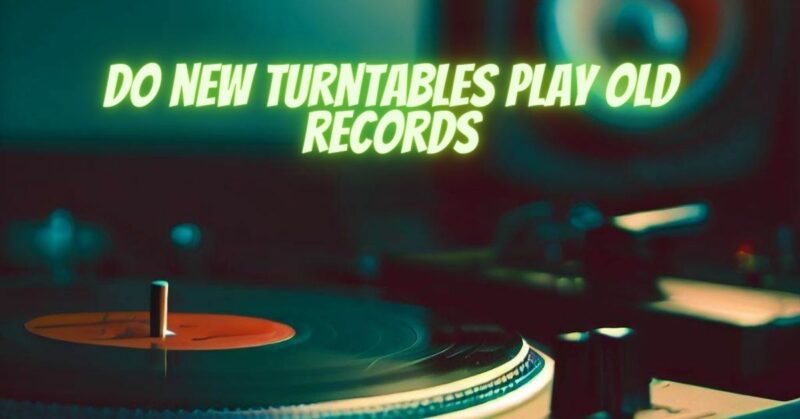As vinyl continues its resurgence in the modern audio landscape, a pertinent question arises for both seasoned collectors and newcomers to the analog realm: Can new turntables effectively play old records? The compatibility between new turntables and vintage vinyl introduces a nuanced discussion encompassing technology, stylus considerations, and the delicate balance between preserving the nostalgic warmth of classic recordings and embracing contemporary advancements in turntable design.
Turntable Technology Evolution:
The evolution of turntable technology has seen substantial advancements in recent years. Newer turntables often feature improved motor systems, precision engineering, and enhanced speed stability, providing a platform for a more accurate reproduction of audio signals. However, the question of compatibility extends beyond the technological prowess of the turntable itself.
Stylus and Cartridge Considerations:
One of the critical factors in determining the compatibility between new turntables and old records is the stylus and cartridge setup. Vintage vinyl records, particularly those from the mid-20th century, may have been subjected to wear and tear over time. A stylus that is too sharp or aggressive might exacerbate the wear on these records, potentially compromising sound quality. Therefore, selecting a turntable with a cartridge and stylus combination that strikes a balance between tracking force and gentleness is essential for preserving the integrity of older vinyl.
Adjustable Tonearm Features:
Some modern turntables come equipped with adjustable tonearms, allowing users to fine-tune the tracking force and anti-skate settings. This feature proves invaluable when dealing with older records that may exhibit varying degrees of wear. Being able to customize the turntable’s setup ensures optimal tracking without subjecting the vinyl to excessive pressure, a crucial consideration when playing records that have weathered the test of time.
Variable Speed Settings:
Another factor to consider is the ability of the turntable to accommodate variable speeds. While the standard playback speeds for vinyl records are 33 1/3 RPM for LPs and 45 RPM for singles, older records may have been produced with different speed specifications. Turntables that offer variable speed settings allow users to match the playback speed precisely, ensuring a faithful reproduction of the original recording.
Anti-Vibration and Isolation:
Older vinyl records, especially those in well-used condition, may exhibit surface noise and imperfections. Modern turntables often incorporate anti-vibration and isolation technologies to minimize the impact of external vibrations on the playback. This not only enhances the overall listening experience but also helps mitigate the inherent noise in vintage records, allowing the music to shine through.
In the intricate dance between old records and new turntables, technological advancements and thoughtful design considerations play a pivotal role. While modern turntables can indeed play old records, the key lies in selecting a turntable with features that cater to the unique characteristics of vintage vinyl. As enthusiasts continue to bridge the generations by blending nostalgia with contemporary innovation, the timeless charm of vinyl records finds a harmonious resonance in the ever-evolving landscape of audio technology.


